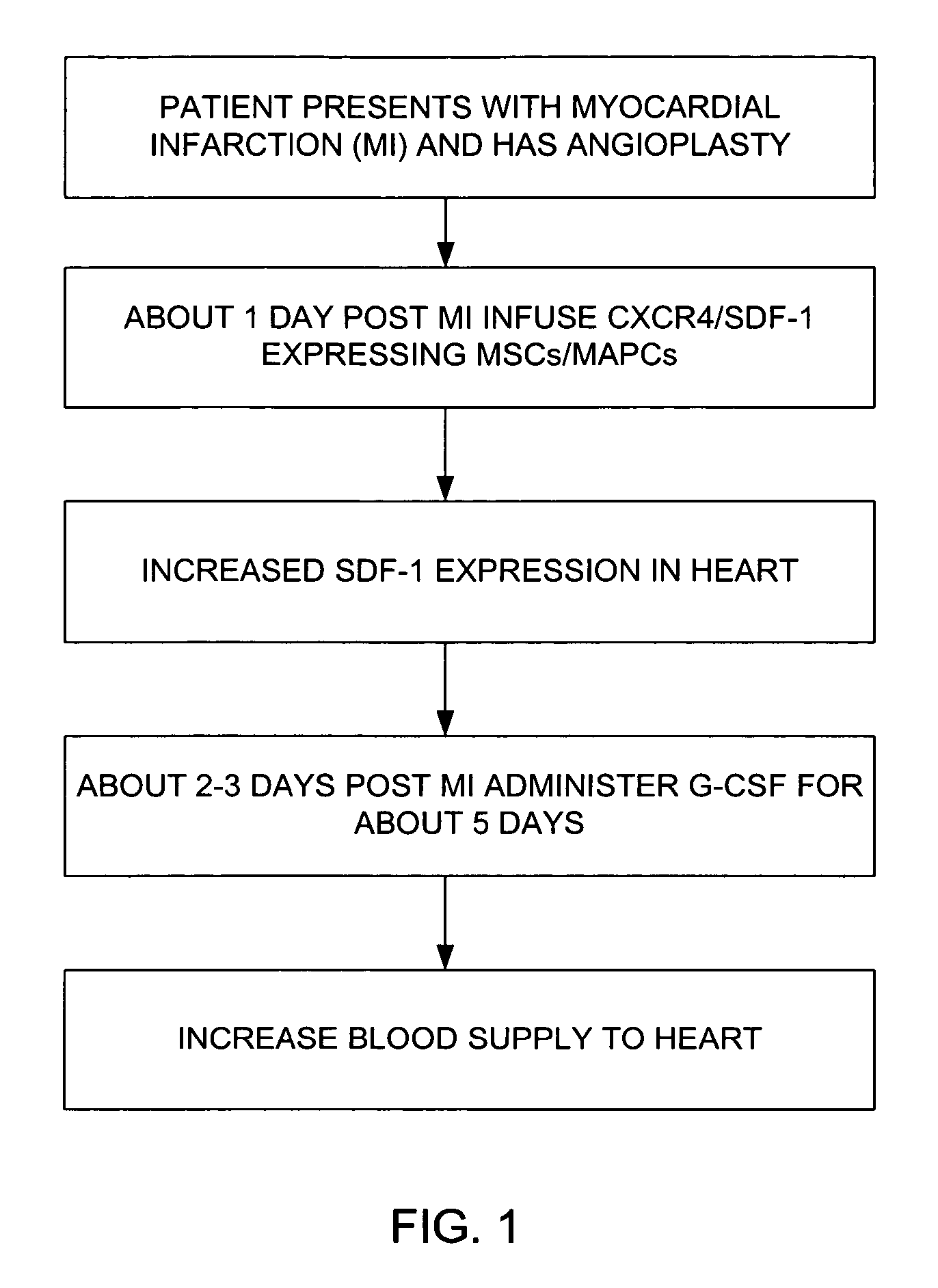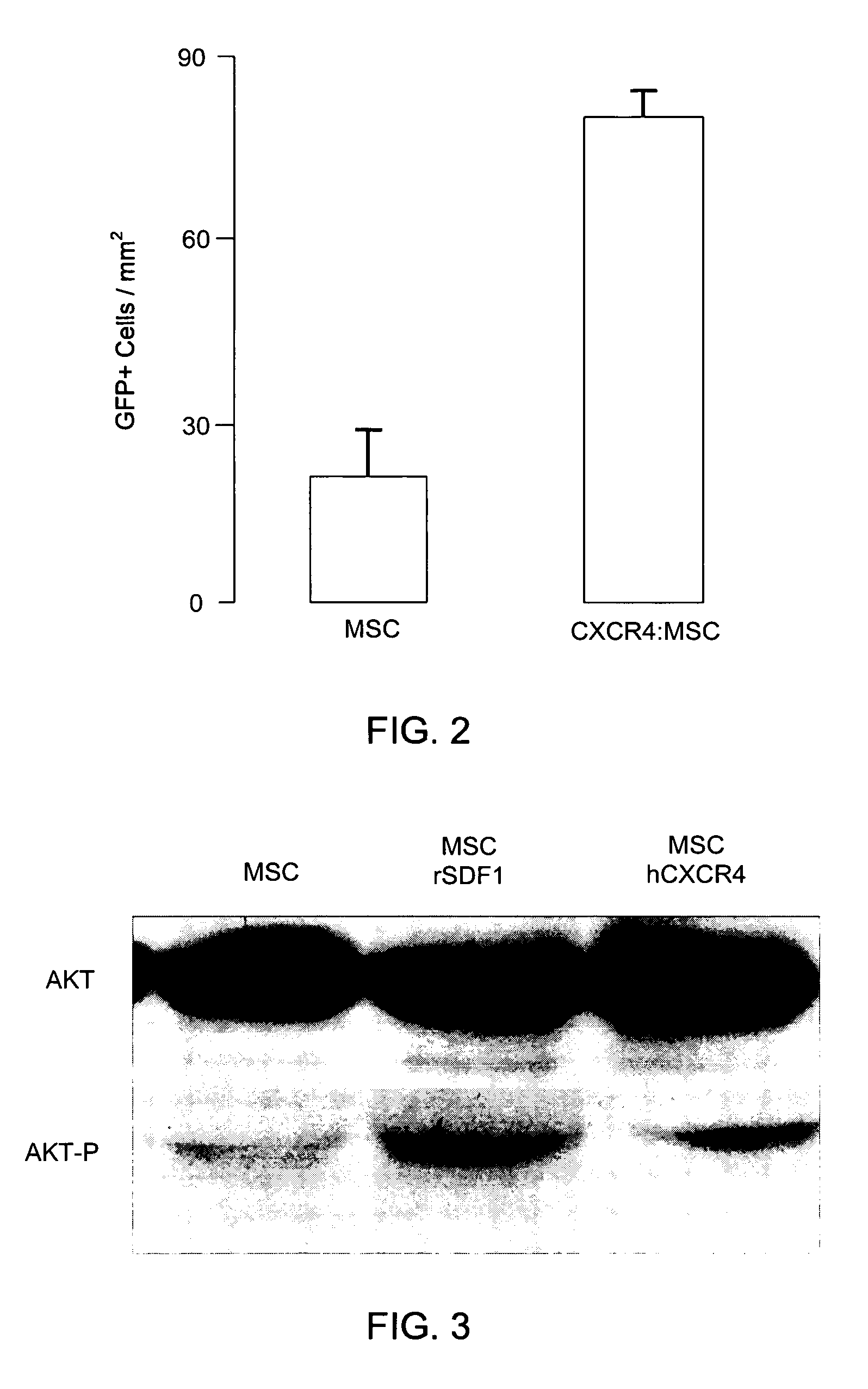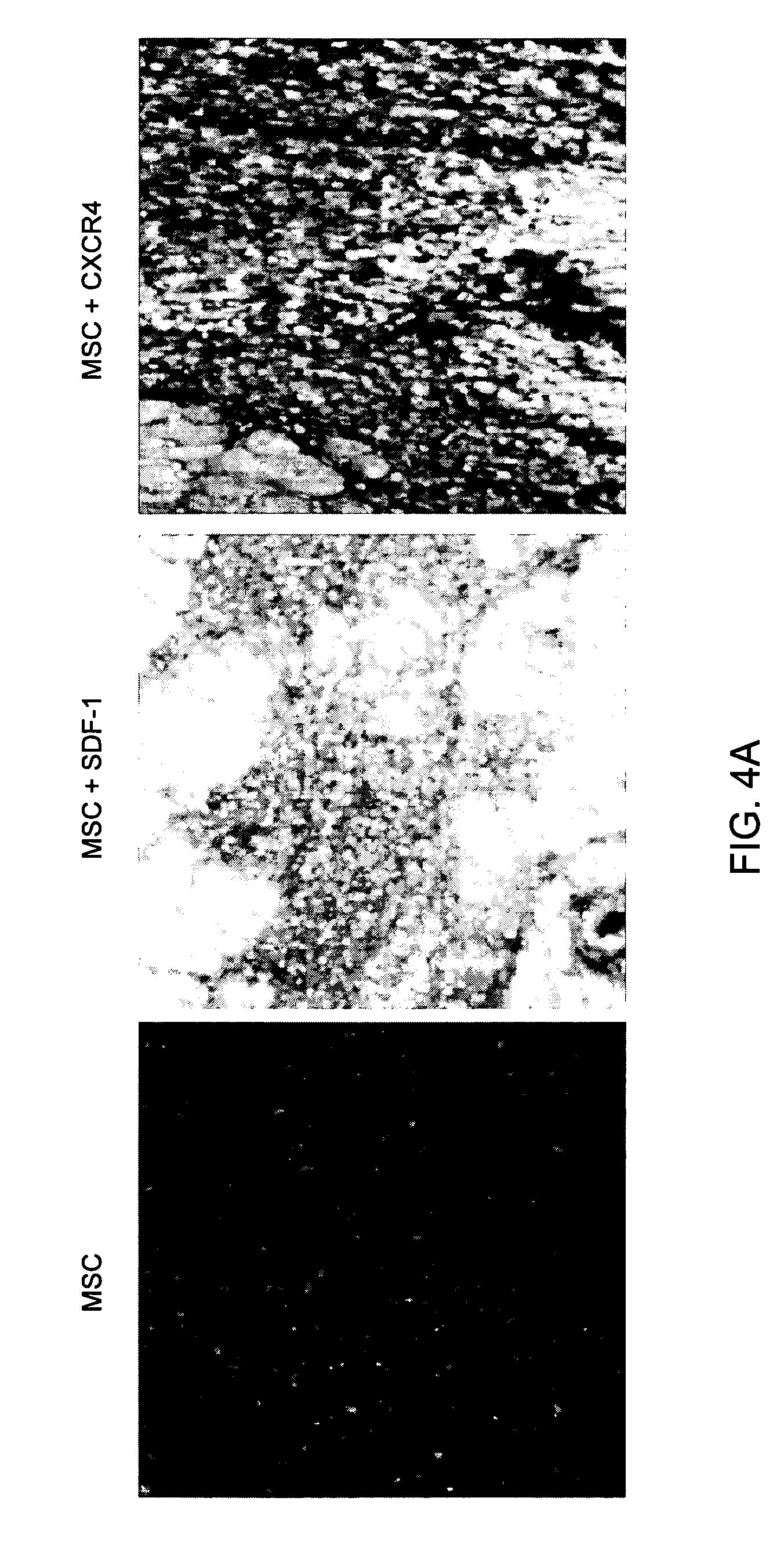Genetically engineered cells for therapeutic applications
a technology therapeutic applications, applied in the field of genetically modified cells, can solve problems such as meaningful recovery of left ventricular function, and achieve the effects of improving tissue survivability, reducing the risk of apoptosis, and improving the survivability and longevity of genetically modified stem cells
- Summary
- Abstract
- Description
- Claims
- Application Information
AI Technical Summary
Benefits of technology
Problems solved by technology
Method used
Image
Examples
examples
[0126] The present invention is further illustrated by the following series of examples. The examples are provided for illustration and are not to be construed as limiting the scope or content of the invention in any way.
Effect of CXCR4 Expression on MSC Homing and Survivability
[0127] In order to ascertain whether genetically modifying MSCs to express CXCR4 affected the homing and survivability of MSC to infarcted myocardium, 2 million MSCs and MSCs genetically modified to express CXCR4 were infused intravenously in a rat 1 day after myocardial infarction facilitated by left ascending artery ligation. FIG. 2 shows the number of MSCs and MSCs genetically modified to express CXCR4 in the infarct zone per unit area three days after infusion of the MSCs and genetically modified MSCs.
[0128] The number of genetically modified MSCs per unit area was substantially greater than the number of MSCs that were not genetically modified. This indicates that MSCs expressing CXCR4 have improved ...
PUM
| Property | Measurement | Unit |
|---|---|---|
| Therapeutic | aaaaa | aaaaa |
Abstract
Description
Claims
Application Information
 Login to View More
Login to View More - R&D
- Intellectual Property
- Life Sciences
- Materials
- Tech Scout
- Unparalleled Data Quality
- Higher Quality Content
- 60% Fewer Hallucinations
Browse by: Latest US Patents, China's latest patents, Technical Efficacy Thesaurus, Application Domain, Technology Topic, Popular Technical Reports.
© 2025 PatSnap. All rights reserved.Legal|Privacy policy|Modern Slavery Act Transparency Statement|Sitemap|About US| Contact US: help@patsnap.com



